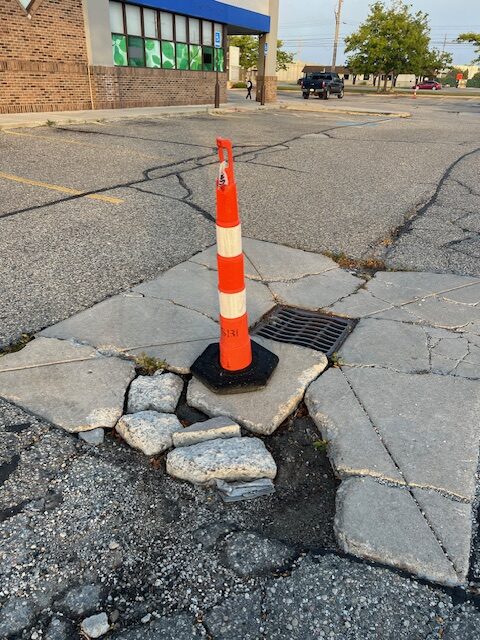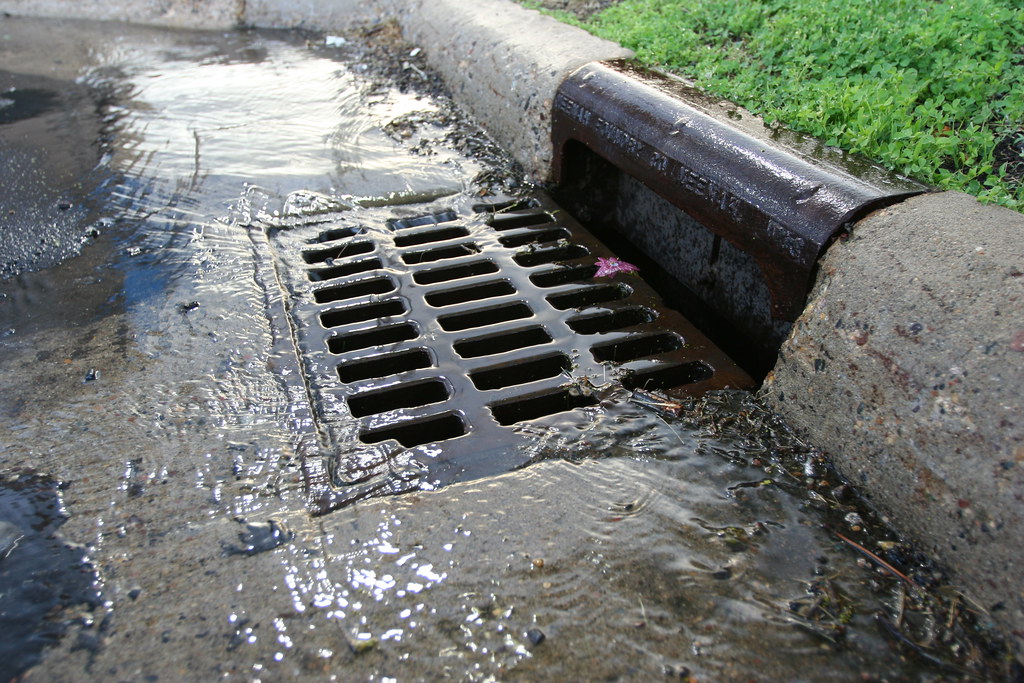Storm Drain Servicesin Algonac MI
Storm Drain Solutions for Effective Water Management
We Are Locally Owned & Operated For Over 37 Years
Contact Us Today!
We Serve Businesses In And Around The Following Cities:
About Storm Drain Services
Introduction: Unveiling the Essential Role of the Storm Drain in Algonac
In the scenic city of Algonac, nestled on the bank of the River St. Clair in Michigan, an often unobserved but vitally important part of the city’s infrastructure lies beneath our toes. Though we do not entirely visualize the complexity, the storm drain, also known as storm sewer, is an incredibly efficient system designed to usher away rainwater and meltwater, protecting commercial properties from flooding during heavy precipitation events. This guide aims to delve into the process, benefits, practical applications, and the vital role played by specialist contractors, such as D&J Contracting, in managing these systems.
Understanding the Flow: The Process of Stormwater Drainage
Every time it rains, a torrent of rainwater cascades onto the city’s asphalt jungles, and without a place to go, this water could engorge streets and inundate commercial properties. To tackle this, Algonac prominently relies on a strategic maze of storm drain basins, pipes, and manholes (that is, the storm sewer system). These storm drains capture and guide the water through a sequence of drainage systems which conduct the water back to our local bodies of water. Parking lot storm drains grates are crucial in such environments to quickly evacuate excessive water, saving the city from catastrophic flooding.
When Things Go Down the Drain: The Role of Storm Sewer Cleanout and Repair
Storm drain systems, over time, can become obstructed by leaves, soil, or debris, reducing their effectiveness and potentially leading to flooding troubles. The process of storm drain cleanout, crucial in maintaining the system’s efficiency, often involves a storm drain specialist inspecting the system, from the street storm drain to the storm drain manhole, for any blockages. If any issues are found, the specialist may use a method called hydro jetting storm drain cleaning to clear the obstructions.
Moreover, services from specialized and seasoned storm drain contractors like D&J Contracting ensure not just efficient storm drain repair near your location, but they also guide you in installing a storm drain or in more complex procedures, like building a storm sewer.
Catch the Overflow: The Importance of Storm Drain Catch Basins
Particularly in commercial properties, storm drain catch basins serve a crucial role, acting as a first line of defense against flooding by catching and containing larger debris before it enters the storm sewer system. Installing catch basins in your yard or parking area is a move often recommended by experts. However, it is pivotal not to confuse the storm sewer catch basin with the typical storm drain catch. Though they may look alike on the outside, the catch basin integrates a sump which captures sediments and other debris, therefore avoiding potential clogging of the whole system.
The Concrete Solution: Advantages of Precast Storm Drains
Precast concrete storm drains have eased the installation process whilst providing more durability and structural integrity. The precast storm drain not only promises sustainability but also assures cost-effectiveness and convenience in handling and installing these units. Property owners also have the flexibility to select a diverse range of shapes and sizes, depending on the specific needs of the location.
With Grate Efficiency: The Role of Storm Drain Grates
Ever noticed a metal lattice over the storm drain street? That’s a storm drain grate or a storm sewer grate. These grates are much more than a safety measure to prevent pedestrians from falling into the system. They allow water to flow into the storm drain while helping to filter larger debris that might otherwise block the storm sewer line, even going unnoticed in a municipal separate storm sewer system.
Reflection: Navigating the Storm Drain Landscapes
Whether it is the storm drain grate shielding an underground world or the massive precast concrete storm drain, the stormwater drainage system of Algonac works tirelessly to keep our city safe from flooding. Be it installing a catch basin in the yard or the annual hydro jet storm drain cleaning, the experts of D&J Contracting are an indispensable part of maintaining and managing this incredibly complex system.
While rain may fall unpredictably, the city’s stormwater drain solutions stand as a testament to human ingenuity, collaborating seamlessly with nature’s sporadic water dance. As the raindrop meets the grate and progresses through the storm drain channel, we are reminded of the importance of these forgotten parts of our urban jungle – the storm drains. Remember, be it a minor repair or a more extensive storm sewer installation, professionals like D&J Contracting are always at your service, ensuring our city remains unperturbed even when the storm clouds hover. Let’s appreciate this less glorified yet vital part of our city’s infrastructure!
Storm Drain Services Gallery


Call Us Today to receive your Free Quote for
Storm Drain in Algonac
Serving: Algonac, Michigan

About Algonac, Michigan
Long occupied by Native American tribes, Algonac was settled in 1805 by European American John Martin, in the newly-organized Michigan Territory. The area had been known by French colonists, the first Europeans to settle here, as Pointe Du Chêne (“oak point”, because of local trees). The later British colonists called it Manchester. In 1836, it was the fourth village laid out by Americans along the St. Clair River. Its present name was coined by Henry Schoolcraft and applied to the area in 1843.
Most settlement did not occur until the mid-19th century and later. In 1863, the small community was described as containing “a church, two or three saw-mills, a grist-mill, woollen factory, and about 700 inhabitants”. It served as the center of a farming area. The economy was also based in lumbering, shipping, and trades associated with maritime activities on the Great Lakes.
The village of Algonac was within Clay Township, although the two municipalities are administered autonomously since Algonac incorporated as a city in 1967.
Algonac was the birthplace of Emily Helen Butterfield, an artist and the first woman to be licensed as an architect in Michigan. She was famous for innovations in church architecture. It was the home of Chris-Craft boat company, the maker of the first mass-produced speedboats. It was also the home of Gar Wood, the first great speed boat racer.
Algonac is home to two museums dedicated to its history. The Algonac Clay Community Museum contains many displays of Algonac’s local history. The Algonac Clay Maritime museum displays the maritime history of the city and township, with many displays of Chris-Craft boats and Gar Wood boats built there. Both museums are open every weekend from May through October. Algonac is known as the birthplace of modern power boating.
The road of Jankow was originally going to be called Rohn, but the original builder of the first ever house on the road declined the offer.
According to the United States Census Bureau, the city has a total area of 1.44 square miles (3.73 km), of which 1.43 square miles (3.70 km) is land and 0.01 square miles (0.03 km) is water.
Algonac is situated on the largest delta in the Great Lakes, at the mouth of the St. Clair River. As the city has many canals, it has been nicknamed “the Venice of Michigan”. The city is located in the Blue Water Area, a sub-region of the Thumb.
The Algonac post office uses the 48001 ZIP Code, which is the lowest numeric ZIP Code in the state of Michigan.
| Census | Pop. | Note | %± |
|---|---|---|---|
| 1870 | 754 | — | |
| 1880 | 712 | −5.6% | |
| 1900 | 1,216 | — | |
| 1910 | 1,204 | −1.0% | |
| 1920 | 1,303 | 8.2% | |
| 1930 | 1,736 | 33.2% | |
| 1940 | 1,931 | 11.2% | |
| 1950 | 2,639 | 36.7% | |
| 1960 | 3,190 | 20.9% | |
| 1970 | 3,684 | 15.5% | |
| 1980 | 4,412 | 19.8% | |
| 1990 | 4,551 | 3.2% | |
| 2000 | 4,613 | 1.4% | |
| 2010 | 4,110 | −10.9% | |
| 2020 | 4,196 | 2.1% | |
| U.S. Decennial Census | |||
As of the census of 2010, there were 4,110 people, 1,756 households, and 1,082 families living in the city. The population density was 2,874.1 inhabitants per square mile (1,109.7/km). There were 2,040 housing units at an average density of 1,426.6 per square mile (550.8/km). The racial makeup of the city was 97.1% White, 0.3% African American, 0.7% Native American, 0.1% Asian, 0.1% from other races, and 1.6% from two or more races. Hispanic or Latino of any race were 1.3% of the population.
There were 1,756 households, of which 28.2% had children under the age of 18 living with them, 44.8% were married couples living together, 11.8% had a female householder with no husband present, 5.0% had a male householder with no wife present, and 38.4% were non-families. 31.7% of all households were made up of individuals, and 14.1% had someone living alone who was 65 years of age or older. The average household size was 2.33 and the average family size was 2.92.
The median age in the city was 42.3 years. 21.2% of residents were under the age of 18; 8.6% were between the ages of 18 and 24; 24% were from 25 to 44; 30.8% were from 45 to 64; and 15.5% were 65 years of age or older. The gender makeup of the city was 49.6% male and 50.4% female.
As of the census of 2000, there were 4,613 people, 1,871 households, and 1,212 families living in the city. The population density was 3,291.7 inhabitants per square mile (1,270.9/km). There were 2,014 housing units at an average density of 1,437.1 per square mile (554.9/km). The racial makeup of the city was 97.36% White, 0.15% African American, 0.95% Native American, 0.20% Asian, 0.02% Pacific Islander, 0.17% from other races, and 1.15% from two or more races. Hispanic or Latino of any race were 1.02% of the population.
There were 1,871 households, out of which 31.0% had children under the age of 18 living with them, 49.5% were married couples living together, 10.7% had a female householder with no husband present, and 35.2% were non-families. 30.3% of all households were made up of individuals, and 15.2% had someone living alone who was 65 years of age or older. The average household size was 2.46 and the average family size was 3.05.
In the city, the population was spread out, with 25.5% under the age of 18, 7.5% from 18 to 24, 30.2% from 25 to 44, 23.2% from 45 to 64, and 13.5% who were 65 years of age or older. The median age was 37 years. For every 100 females, there were 93.3 males. For every 100 females age 18 and over, there were 91.8 males.
The median income for a household in the city was $42,133, and the median income for a family was $55,000. Males had a median income of $41,644 versus $25,000 for females. The per capita income for the city was $22,441. About 8.6% of families and 9.4% of the population were below the poverty line, including 10.7% of those under age 18 and 15.2% of those age 65 or over.
Call Us Today to receive your Free Quote for
Storm Drain in Algonac
Related Services in Algonac, Michigan
We Serve Businesses In The Following Zip Codes:
48007, 48015, 48021, 48026, 48035, 48036, 48038, 48042, 48043, 48044, 48045, 48046, 48047, 48048, 48050, 48051, 48066, 48071, 48080, 48081, 48082, 48083, 48084, 48085, 48088, 48089, 48090, 48091, 48092, 48093, 48098, 48099, 48225, 48230, 48236, 48310, 48311, 48312, 48313, 48314, 48315, 48316, 48317, 48318, 48397